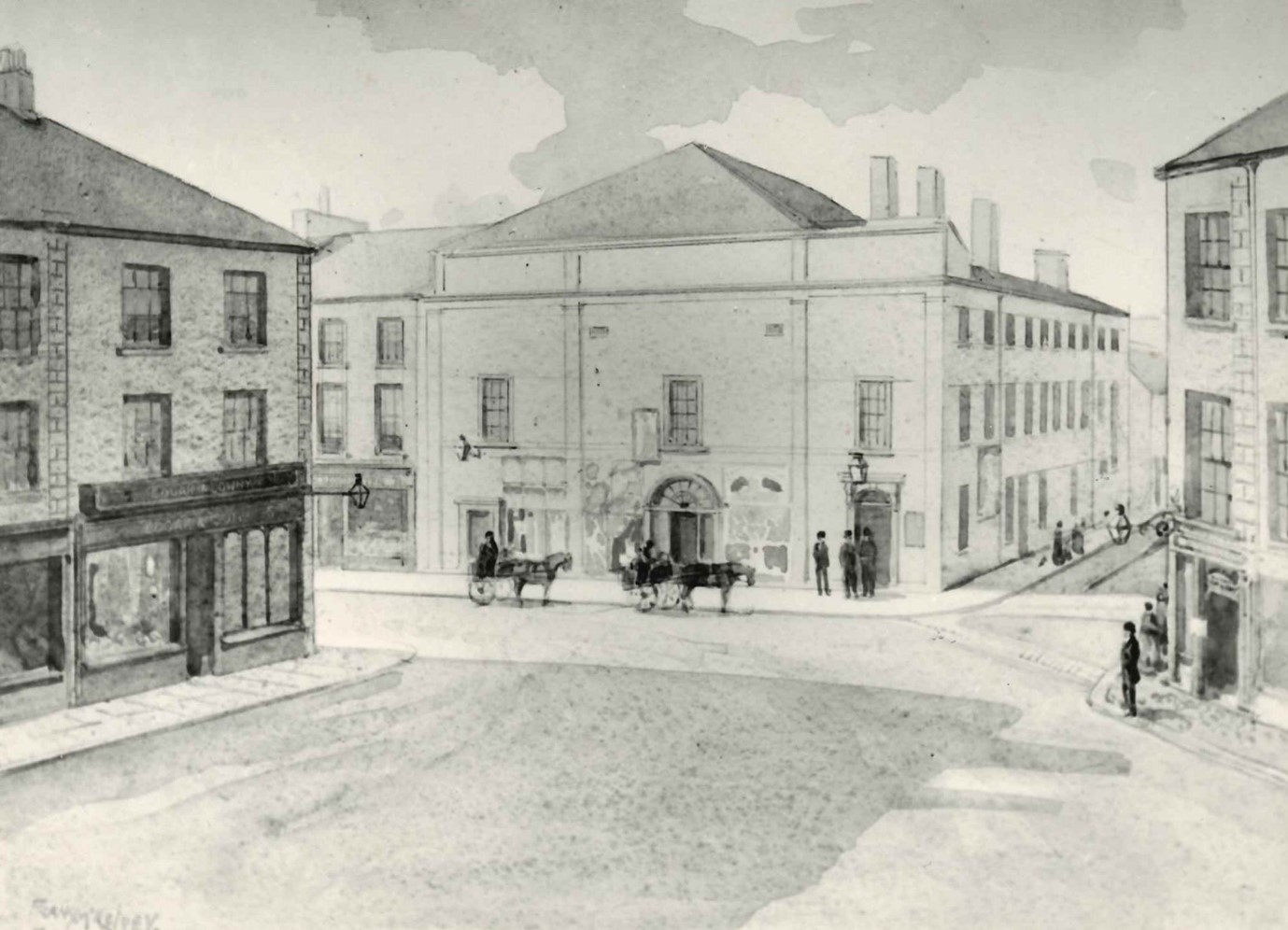Early Belfast Theatre and performances
The theatre bills in Alexander Riddell’s collection give a good insight into what a night at the theatre might look like in the 1860s and 1870s. Popular lead actors were given top billing, they usually appeared in multiple lead roles across two or three plays and provided the main attraction of the night. These nights usually ended with a light-hearted performance, usually a comedy, referred to as a ‘Farce’, such as Sarah’s Young Man or How to Settle Accounts with your Laundress. Music always played a large part in the performances and musical numbers were printed on the billheads so audiences could see the songs that would be performed. Towards the end of the third incarnation of the Theatre Royal Joseph Warden found more musical pieces to entertain and regularly invited the renowned Carl Rosa Opera Company to perform.
Many people came into Belfast specifically to see well known actors who would perform throughout the night. A sign of the popularity and length of these nights is indicated by the fact special railway arrangements were made to accommodate those who had travelled into Belfast for the shows. When J.L. Toole performed for 5 nights in September 1867 there were special trains leaving Belfast at 11:30pm for Sydenham, Holywood and Carrickfergus.
Many of the big names that performed in Belfast came from the UK and Ireland and they often stayed for several weeks at a time performing a variety of roles. Many already had extensive success in the UK, United States and Australia. Clarence Holt for example was a successful actor and playwright from London. He had a thriving stage career and often performed with his daughter, May Holt. They toured throughout England, Australia and New Zealand and Clarence pioneered English drama in New Zealand establishing a theatre in Dunedin. May, who played Ophelia from age 18, went on to become an accomplished playwright herself. In 1868 they both performed together in Belfast in Out of Evil Cometh Good, an adaptation of Victor Hugo’s Les Misérables that Clarence wrote 5 years after the release of the book.
Shakespearian classics like Othello, Richard III and Macbeth were frequent crowd favourites. Alice Marriott, an English actress professionally known as Miss Marriott gained fame playing the lead role in Hamlet, females playing male roles was not without precedent, but her performance was a hit with crowds across UK theatres. A review in the London Times praised Marriott’s performance, it reported she was ‘thoroughly trained in all the discipline that belonged to the male actor; yet, when she becomes thoroughly manly, she is never ‘manish’, as many ladies become when they assume male attire’.
Theatre Royal manager Joseph Warden was no stranger to the stage, acting frequently alongside his wife Jenny. In fact, many husband and wife couples would be seen on stage, often playing opposite each other. This included Hermann and Jane Vezin, an American couple who played opposite each other in Romeo and Juliet and other plays. Perhaps the crowds suspected that the familial bond added to the chemistry of the roles on stage.
Many plays were adapted from popular works of fiction at the time. Sir Walter Scott’s The Heart of Midlothain was reinvented as Jeannie Deans and Charles Dickens’ David Copperfield was reimagined as Lost Em’ly. There was also a fascination with international dramas set overseas, reflecting an interest in the ever-expanding British Empire. Some plays portrayed specific events in recent history. The Relief of Lucknow was written by Irish playwright Dion Boucicault. It detailed the defence of the British residency of the city of Lucknow during the Indian Rebellion in 1857. The play itself was written immediately after the event and performed soon after in the Theatre Royal.
In an article commenting on the Theatre Royal following its destruction by fire in 1881 the Belfast Newsletter praised the variety of stars and performances that Warden had successfully engaged to perform there. It reported that the ‘occupants of the auditorium have in turn been roused to indignation and passion at the villainies of Richard or Iago, to horror and the treachery of Macbeth…have heard the story of Claude Melnotte’s love, and traced the diplomacy of Richelieu’. Under Warden’s management the Theatre Royal had attracted a truly international range of talent, and cemented Belfast as a hub for quality theatre in Ireland.

